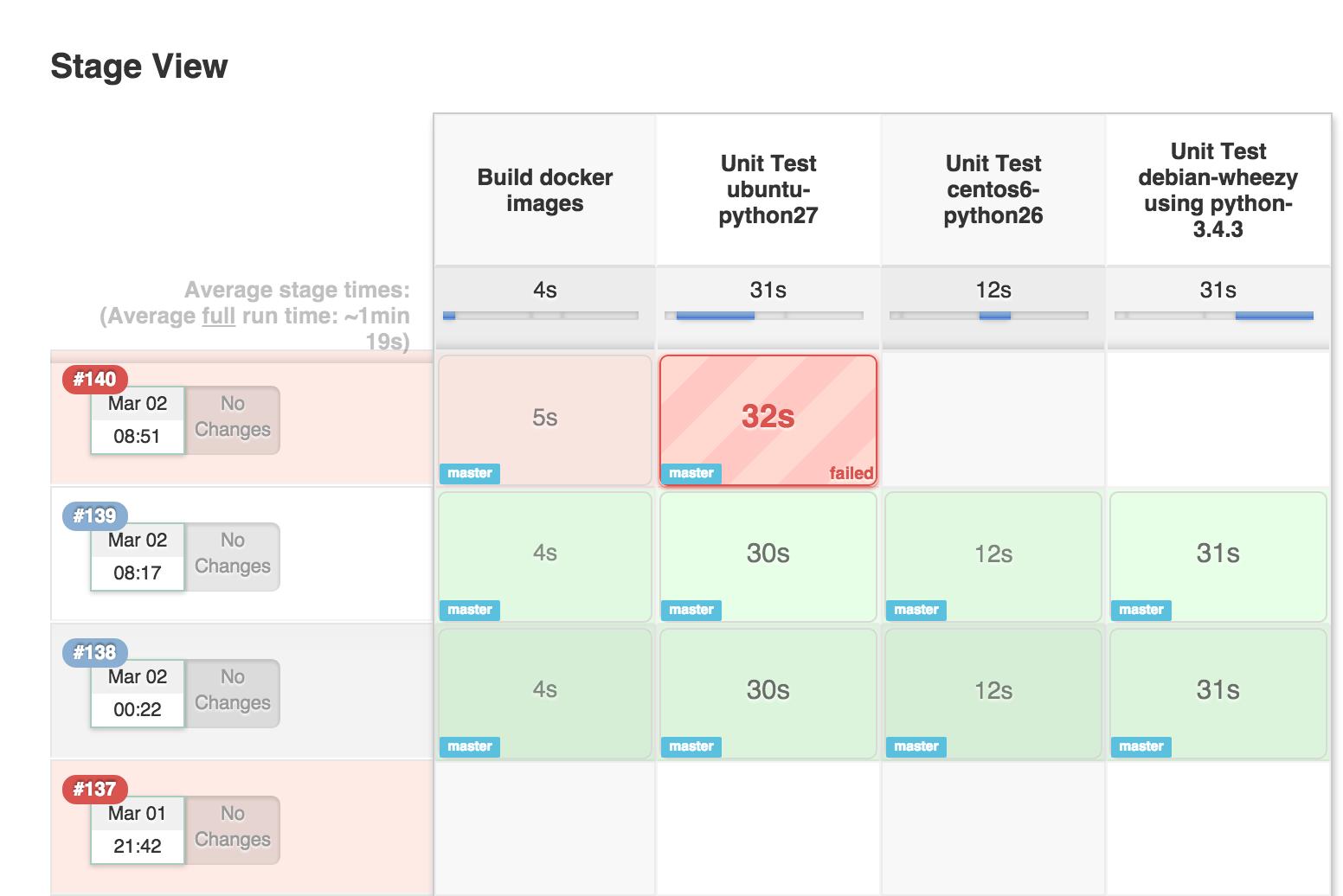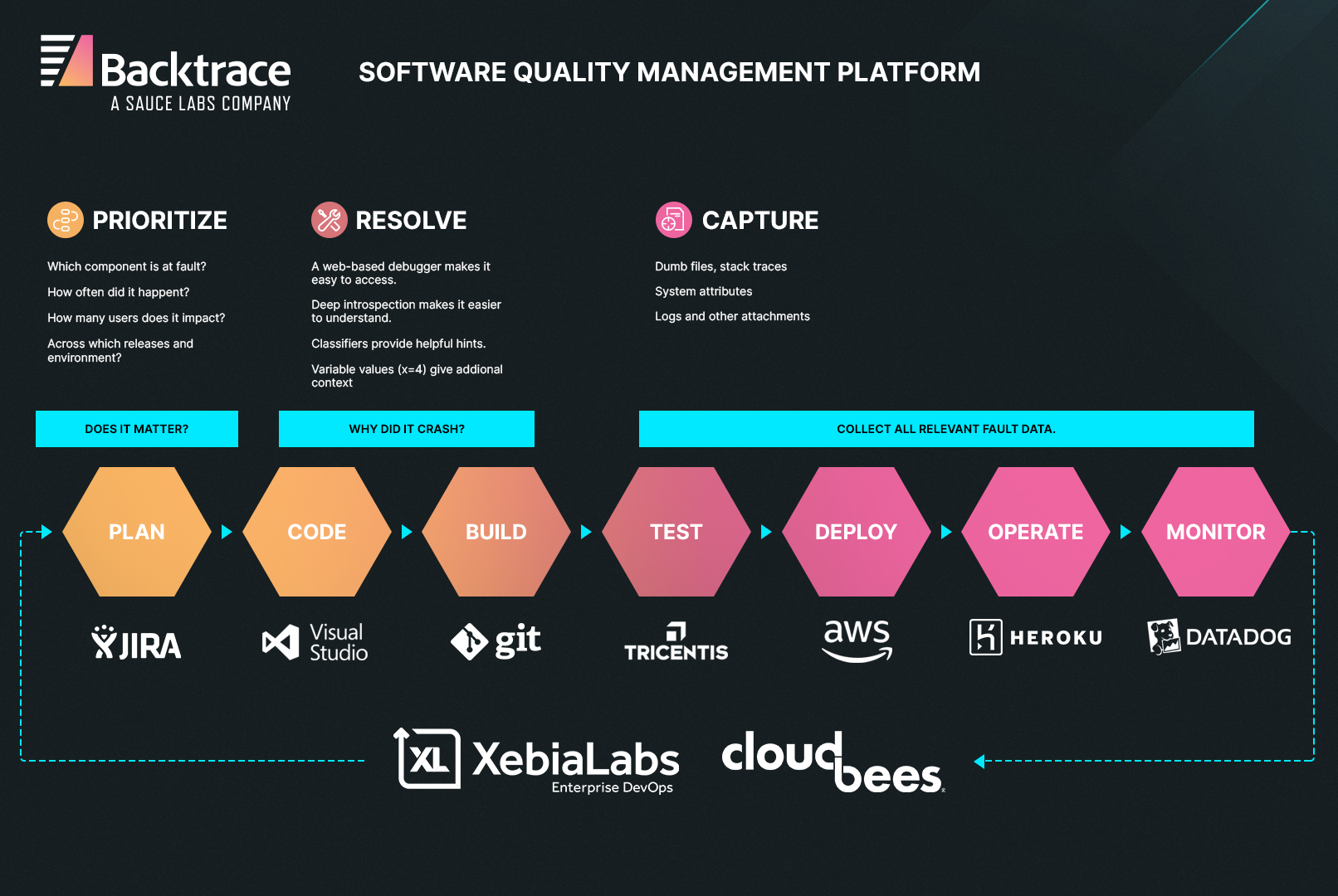Backtrace Blog
For the latest developments from our engineering team, head over to the Engineering Blog at engineering.backtrace.io.
Enabling A Continuous Quality Feedback Loop In Jenkins And Your CI/CD Pipelines
As companies put increased focus on their digital operations and invest more heavily in their DevOps processes, development managers play an important role in recognizing how to properly plan and execute all stages of the CI/CD pipeline.
However, when development managers are tasked with ensuring long-term stability of their build pipelines, they quickly realize that the red/green status information for various steps of the CI/CD pipeline isn’t enough to get the job done. When tests or builds fail, and problems inevitably arise in the releasable artifact, incident response times becomes the key metric to track, as this failure negatively impacts your ability to deliver a new release on time.

Figure 1: We can see a failure in the Unit Test ubuntu-python27 stage. Once the developer is alerted, they need to do a lot of legwork to collect data to better understand what went wrong and how to fix it.
The challenge is that data collection and root cause analysis of faults and quality issues leads to a considerable drain on time and resources.
So, with incident isolation and response playing a key role in the reliability of build pipelines, how can development managers efficiently manage their time when diagnosing and addressing these key issues in their CI/CD pipelines? And better yet, how can they ensure their teams have all the information they need to prioritize and complete their debugging processes adequately?
The answer is by integrating continuous quality feedback loops into their software development lifecycles and CI/CD pipelines.
INTRODUCING CONTINUOUS QUALITY FEEDBACK LOOPS
At its heart, DevOps is about continuous feedback. Teams want to learn quickly if their development efforts or new features are well received. The more detailed the feedback, the faster a developer can perform remediation or debugging operations. Many tools exist to notify teammates and organize information to support the developer. But, minutes-to-hours of manual work remains for the developer—collecting the details and diagnostic information they need to perform debugging operations.
Continuous quality feedback loops take the guesswork out of error detection and analysis in the SDLC by providing automated data collection and transparency of fault information data across production, QA, and development environments. While continuous testing helps identify faults through the CI/CD cycle, continuous quality feedback loops enable analysis on those faults and provide actionable insights on what causes these issues.
By incorporating continuous quality feedback loops, DevOps teams can have a single view of all the required diagnostic data to support debugging faults and instability from every lifecycle stage—development, testing, production.
Continuous quality feedback loops take the legwork out of data collection, indexing, and aggregation, informing development teams of exactly where their most impactful issues exist so they can quickly address them.
Before continuous quality feedback loops, developers would inevitably ask the same set of questions when assigned a debugging task. What was the environment information the app was running on? What else was running in that environment? What was the exact error message? Can we get access to the logs or a core dump? Developers spend crucial time collecting this information before they can even begin analysis. And that’s where continuous quality feedback loops come in.
When integrated into each stage of your pipeline, continuous quality feedback loops allow teams to capture every fatal or non-fatal exception that occurs throughout the entire stack, including all ancillary data required to begin analysis and debugging. This transparency is critical when diagnosing failures and removing errors and inefficiencies in the pipeline, and can now be automatically populated into your Jira tickets, Slack messages, or other notification and incident management systems. This means developers save that critical time they need to begin debugging, and get your pipeline back to producing deployable software.
HOW CAN BACKTRACE HELP?
Backtrace is a cross-platform crash and error management solution designed to support continuous quality feedback across your entire development stack. We aggregate software error data throughout the SDLC and deliver it to development teams in one, easy-to-use dashboard system, helping them prioritize quality assurance processes and ensure long-term stability of their applications and services.

Backtrace supports every stage of the CI CD Pipeline with actionable error reporting.
Backtrace is a Unity VSP (Verified Solution Partner).
Learn more about how we work with Unity and sign up for free today:
